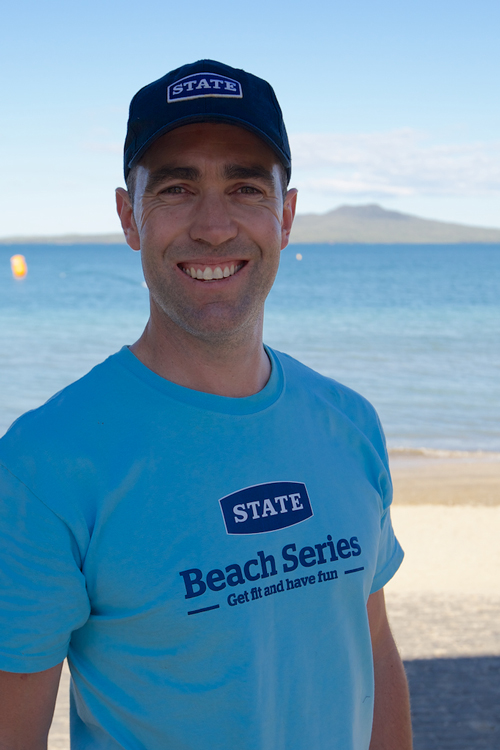A focus on R&D, along with a high degree of manufacturing expertise and the ability to produce small runs, has seen inflatables manufacturer Incept Marine satisfy some interesting and challenging orders over the years.
Along with thousands of inflatables for whitewater rafting enthusiasts, they’ve been suppliers to the movie industry and the Bangladesh navy. They’ve provided rescue boats for the US and Canada, and designed and manufactured a wide range of inflatable craft for port and oil companies across the globe.
The Taihape-based business was launched 26 years ago when John Booth and his sons Alastair and Philip recognised the potential in whitewater rafting.
“Back in the early ‘80s it was a very new sport across the world and New Zealand jumped on the bandwagon and really got into it,” says Alastair Booth, who has been involved in R&D for the company since its inception.
Our world class rivers became a magnet for overseas tourists keen to enjoy the New Zealand rafting experience. “The first ten years were good,” says Alastair. “In the heyday the big operators would run up to 300 people a day down the river. We were a small company; satisfying the local market kept the three of us busy.”
But the market here was never going to be huge and there’s always a next big thing.
“Today the larger companies would be lucky to have a hundred rafters a day.”
However, as local demand levelled off, an opportunity to export into the United States saw production virtually triple; staff numbers grew and they moved from the
backyard garage ‘factory’ to premises in town.
The exchange rate favoured exporters and brand recognition among enthusiasts meant business was steady.
Meanwhile Incept was handling original equipment manufacturing (OEM), producing products for other brands, and, more crucially, Alastair’s design nous was leading to the development of a diversified product range.
Today Incept Marine manufactures and exports world class inflatable boats, whitewater rafts, inflatable kayaks and canoes, sea kayaks and rescue craft, in addition
to OEM.
While it adds to the cost, Incept’s attention to detail gives them an edge over comparable products. “We go out of our way to produce a technically good product. A tube is a tube, it’s how you put it together. It’s the intangibles that are important; where you place the components so they work for manufacturing as well as the user. As a company we’re quite design savvy and we’re able to come up with the manufacturing processes to do these things.”
But new designs don’t always happen overnight. Their sea kayak, for example, which embodies a lot of innovative ideas, is the result of more than five years work, plus a year by a graduate student through a government R&D grant.
Incept Marine has a low-key approach to marketing. “It’s pretty much word of mouth,” admits Alastair. More and more private buyers are referring to their website but he says it’s hard to know how important it is. “We sell online and that seems to come in fits and starts; we’ll have a month where it goes berserk then it quietens down for a while.”
The company has a distributor in Australia but using agents in other markets has not always been successful. Turnover is reasonably stable and 70 percent of their output is exported.
Along with the fluctuating exchange rate which makes discounting almost impossible, sourcing materials is probably their biggest challenge. “The one manufacturer of PVC in New Zealand closed just as we started so we’ve basically always had to import raw materials,” says Alastair.
Film stars
Incept’s association with the movie business made news recently when it was revealed they’d supplied life rafts for the Angelina Jolie-directed movie Unbroken.
“With Unbroken we were competing against China and I think they came to us because they were confident we could give them what they wanted in the time frame,” says Alastair.
They wanted 26 WW2 vintage life rafts delivered in six weeks. No pressure.
Incept went above and beyond, delivering on time and handling extra work including laminating canvas onto the raw raft material before construction to create authentic looking replicas.
Producing rafts for use by the Bangladesh navy was another challenge. “They had to be black for use at night, and because they’re not allowed to sell their currency outside the country it all had to go through government channels.” There was no competition from China however. “One criteria of the tender was that it didn’t go to China! That helped us get a foot in the door and get the order.”
The business has been largely self-funded, although some major projects have required going to the bank. “Back in the early 90s we had a raft order for 300 odd boats for a company in America to tie in with the Atlanta Olympics. We had to fund that through the bank.”
If what you’re doing is sound – and you pay your bills on time – this shouldn’t be a problem for a growing business, says Alastair.
Growth plans
While still very much a family business, Incept Marine has grown from a band of three to a company that currently has nine on the factory floor and four in the office.
While the Incept brand is already well established in Australia, the US, Japan, Indonesia, Malaysia and Nepal, growing the export business will take the company to the next level, says Alastair.
He believes their FAB dock could be the answer. Fab, in this case, owes nothing to the Beatles and everything to the ‘fabric’ that’s a component of this unique dry-docking system which actually keeps the boat out of the water while it’s moored. Essentially an inflatable tube sits around the outside of the boat and a PVC floor fits over the underside.
While easier docking is an advantage, the big plus is the elimination of the need for the anti-fouling which is polluting waterways. It’s already exciting global buyers, and at least one local Council charged with quarantining boats entering our waters is using the system.
Expected demand will mean manufacture will have to go offshore – something the Booths have resisted until now because of the emphasis they place on quality.
An inflatable tube may well be just that but getting those refinements right isn’t always easy. “If the creative juices aren’t flowing it can be hard work,” says Alastair. But then there’s the buzz he gets from happy customers; “People who get a kick out of what we’ve done because it gives them what they want.”
Patricia Moore is a freelance business writer. Email [email protected]





